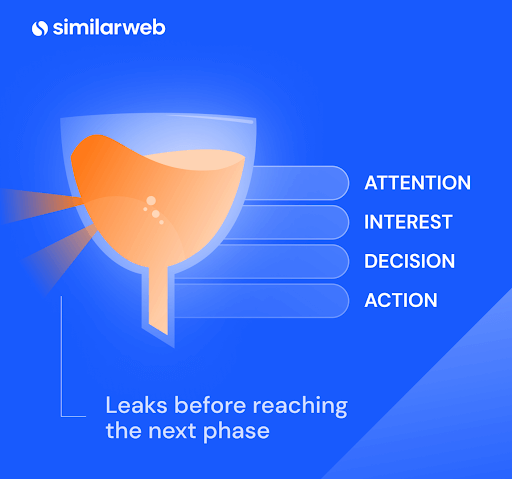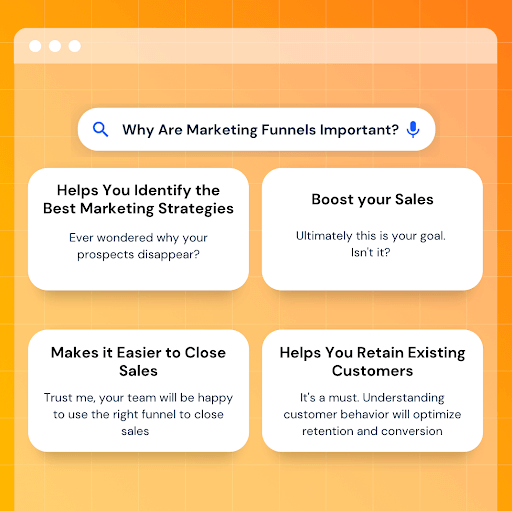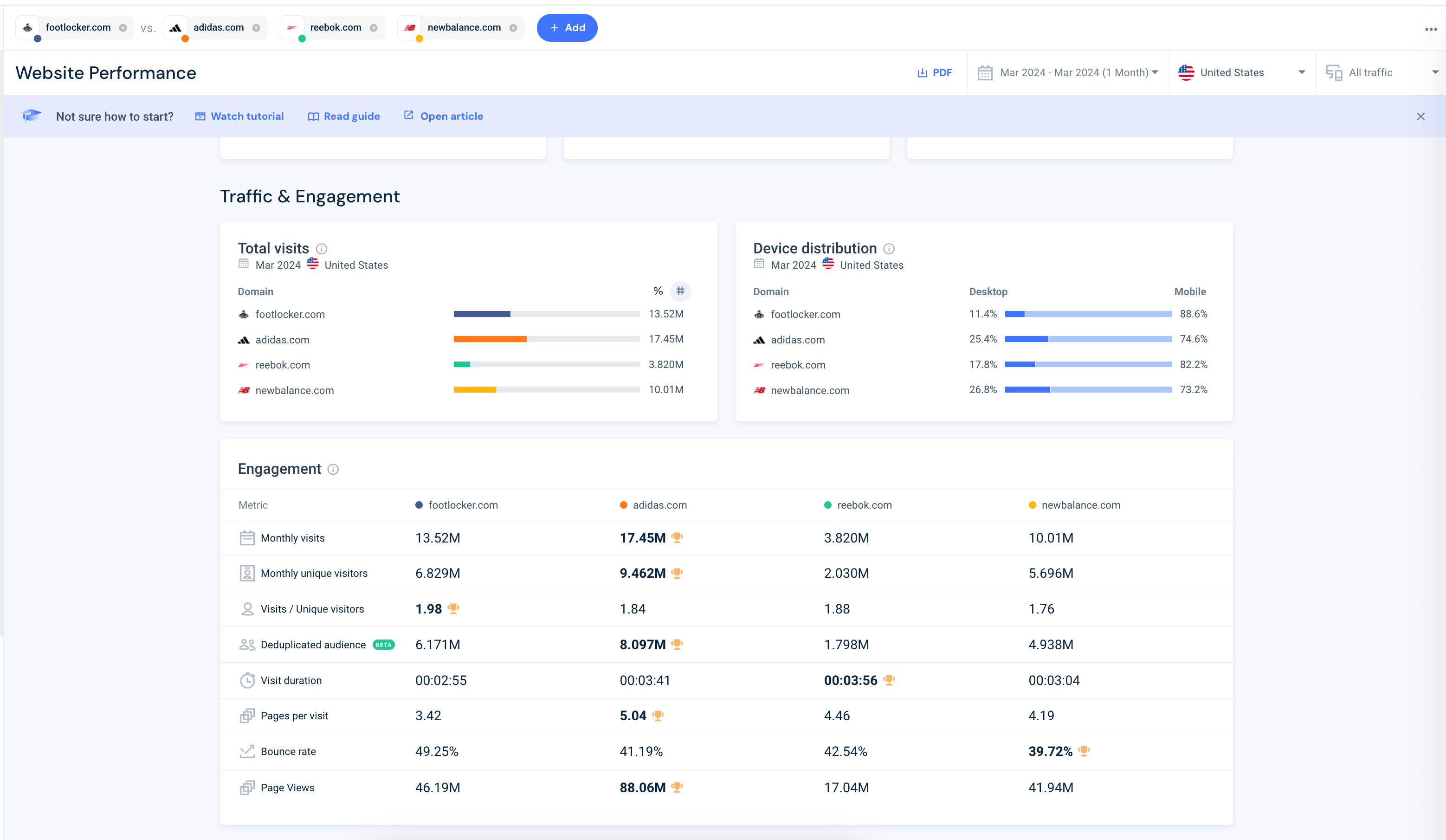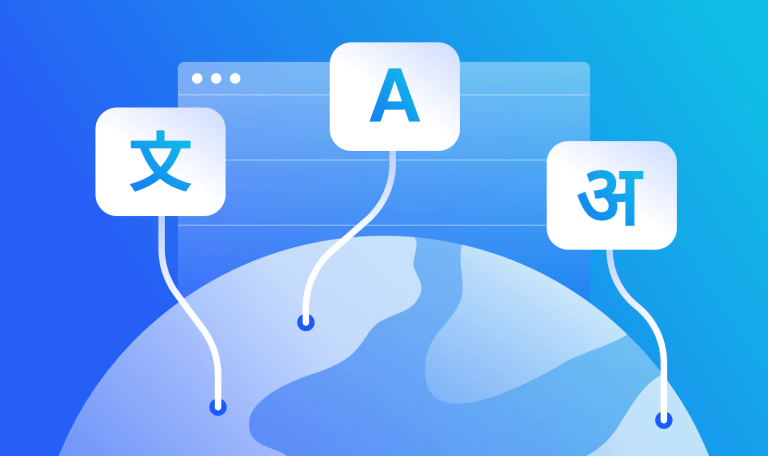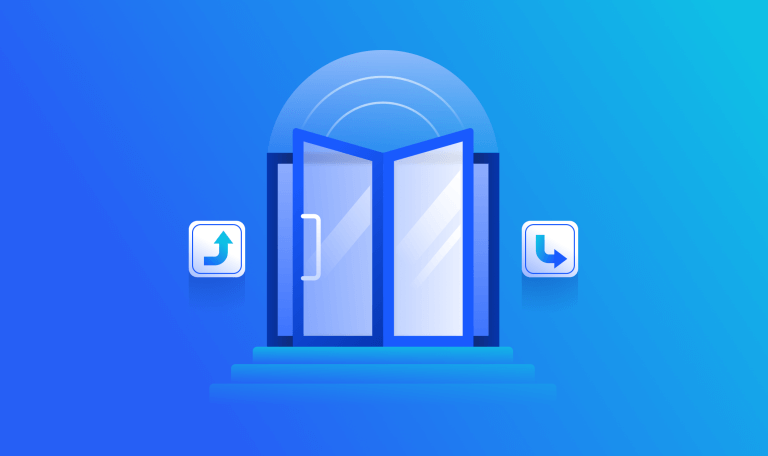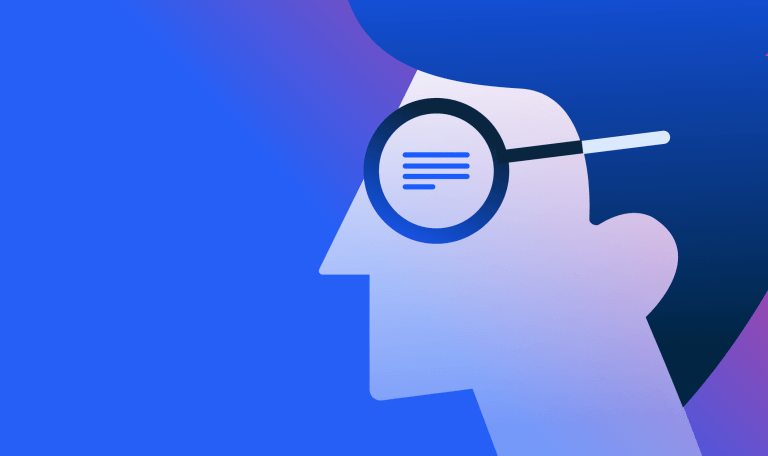Marketing Funnels: What They Are, & The Top Strategies You Need
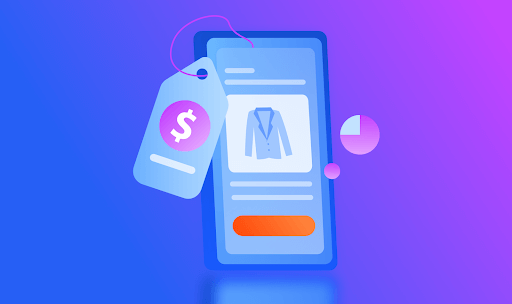
From the second a consumer becomes aware of your business to the moment they convert, there’s a mountain of potential obstacles in their way. Anything – be it a clunky website experience, unconvincing marketing, or lackluster lead nurturing – can cause friction and send your potential customer into the waiting arms of a competitor.
Your job? To make sure that doesn’t happen. But don’t fret – here’s where a marketing funnel can help.
With the right digital marketing funnel, you can understand how your customers are moving through your business’s ecosystem. You’ll know what’s airtight, what could be streamlined, and where the leaks are. (And, of course, be able to plug them.)
But what are marketing funnels, exactly? What are the different stages, why are they important, and what key strategies can you employ to not only drive traffic – but convert it, too?
Read on to find out.
What is a marketing funnel?
A digital marketing funnel is a way of visualizing your customer’s journey. It begins at the moment they first discover your business, and culminates when they purchase from it (or take another desired action, such as signing up for your mailing list).
Plus, of course, all the steps in between. Informing, nurturing, and convincing that consumer – then turning them from a prospect into a patron.
So – why a funnel? Why not a pipeline, or a pathway?
Marketing funnels share the shape of their eponym – narrowing from a wide top down to a slim channel. Here, the funnel’s width relates to the number of customers engaging with your business at any point.
At the start of your marketing campaign, chances are you’ll be reaching a lot of people – so the funnel’s wide. But only a few will choose to find out more about your product – and fewer still will become interested in making a purchase. As these potential customers drop off, the funnel tapers – until you’re left only with ones of the paying variety.
We’ll get stuck into the different online marketing funnel stages shortly. For now, though, let’s ask – why is a marketing funnel important?
Why is a marketing funnel important?
Marketing funnels are more than merely a pretty way of visualizing your business’s customer journey. And they work best when they’re not used purely in terms of principle, but in practice – providing you with the data you need to understand and optimize how you market and sell to your audience.
Here are the key benefits of a marketing funnel:
Search for (and stop) leaks
With a strong knowledge of your marketing funnel, you’ll be able to identify – and plug – any leaks. (‘Leaks’, in this context, mean friction or drop-off points in the funnel; attrition; basically, any point at which you lose a potential customer.)
Track a wide range of behaviors
Marketing funnels are also important because they don’t have to map out a purchase alone.
You can deploy a marketing funnel to track your customer’s journey to a range of desirable outcomes, including:
- Signing up for your mailing list
- Filling out a form
- Reading a particular piece of content
- Downloading more info from your site, such as a brochure or whitepaper
Combine with other intelligence for maximum insight
Marketing funnels are important because they help you understand customer behavior at different stages of the buying journey. With this, you can optimize and iterate across all aspects of your business’s offering: from how you nurture and generate leads, to how you market through content, emails, social media, and search engines.
Basically, marketing funnels work. And, when paired with the Similarweb Digital Marketing Intelligence suite – itself powered by real behavioral data, from equally real users – they form a crucial cog in any truly holistic digital marketing strategy.
Marketing funnel stages
For a model that’s been around since the 19th century, an exact definition of the marketing funnel is surprisingly difficult to pin down.
Its earliest origins trace back to 1898 when Elias St Elmo Lewis mapped out the customer odyssey in a four-stage theory:
- Awareness: an individual becomes aware that a seller has a product or service that may be able to meet their needs.
- Interest: that individual then becomes interested in the product. They start to request more information and begin comparing it to similar offerings from competing sellers.
- Desire: the person wants the product, and – with their doubts assuaged and questions answered – is ready to take…
- Action: the person becomes a customer by purchasing the product or service.
But while AIDA laid the marketing funnel’s foundations, no model is universally accepted among businesses today.
Some marketing funnel models have as few as three steps; others as many as seven. Other models don’t end with conversion – instead progressing to stages such as ‘loyalty’, ‘retention’, and ‘advocacy’ – while yet another reframes the funnel as an hourglass, splitting the journey into the pre- and post-purchase process.
The model we’re the biggest fan of, though, sticks pretty closely to the funnel’s AIDA antecedents. It portions the archetypal customer journey into four pre-purchase stages (top, middle, and bottom of the funnel) and one post-purchase (retention).
Now, let’s take the theory of the marketing funnel and turn it into a real-life(ish) example.
Summer sandals and SEO success: a marketing funnel case study
You own a children’s clothing store. It’s the height of summer, so naturally, parents are shopping for lightweight garments for their little ones.
50 potential clients type ‘best fabrics for kids to wear in summer’ into Google. And guess who appears on the first page? You, thanks to your superb SEO strategy! (One, perhaps, informed by Similarweb’s suite of keyword research and analysis tools.)
Of that original 50, 35 people click through to your website (awareness). Of these, 20 sign up to your mailing list (interest). Half of this group then settles on an item (desire), before taking the plunge and buying a piece of clothing from you (Woohoo! Action).
From that initial Google search to checkout, the numbers dropped from 50 > 35 > 20 > 10. And, while 10 purchases might sound low, it still represents a 20% rate of conversion from that original batch of leads. Not bad!
Remember, the strength of a marketing funnel is also in its ability, alongside your website’s key metrics, to identify ‘leaks’.
In the above scenario, for example, you might be generating a lot of traffic to your website. However, the number of people then signing up for your mailing list might be quite low. In this case, the issue might be with your site not inspiring confidence, or with the process of signing up for the mailing list itself (i.e. the form being hidden away, being too hard to fill out, or – worse – a broken CTA button).
On the other hand, drop-offs between the desire and action stages – after the customer has settled on a product, but before they purchase it – might suggest friction in your online checkout process. Again, look for the cause. Are you asking for too much information? Do you offer the ability for your customer to check out as a ‘guest’?
Does your site’s shopping cart present an experience that’s clean, cohesive, convenient, and consistent with your site’s look and feel? While a good marketing funnel won’t tell you the cause of those friction points, it will go a long way toward helping you find them – and smooth them out.
The difference between B2B and B2C marketing funnels
As we saw earlier, no funnel is created equal. And, when it comes to B2B vs B2C marketing funnels, the differences are particularly pronounced.
Let’s go ahead and break down the key differences:
Different audience
The main – and perhaps most obvious – difference between the two is their respective target audiences. While B2B marketing funnels are concerned with selling to other businesses, B2C targets the end consumer directly. Let’s see how this manifests itself within the funnel…
Different sales cycle length
Thanks to the internet and the wonder of ecommerce, B2C sales can happen in a matter of minutes – even seconds. Your lightbulb dies? Simply order a spare off Amazon. Fancy a calzone? Give your local pizzeria a call.
B2B marketing, however, is a much longer, more drawn-out process. From awareness and interest to desire and action, the B2B sales funnel can take place over months – even years.
Different targeting and customer motivations
Unlike in B2C funnels, B2B customers aren’t buying for themselves, but for a business. Inevitably, that means there are a few fingers in the proverbial pie – and a lot more stakeholders to run things by.
This, of course, is one of the reasons for those seemingly interminable sales cycles. But it also means the targeting is slightly different.
Rather than tapping into the pain points and motivations of the individual (their need for a well-lit home, for example, or for a 12-inch pepperoni with extra cheese), you’re aiming squarely for the business. This has inevitable implications for how you pitch your marketing campaigns at the ‘awareness’ stage – and the approach you take to moving these businesses to the pointy end of the funnel.
Marketing funnel strategy
So, by this stage, you know what online marketing funnels are, which stages are involved, and how you can apply them to unlock more insights into your customers’ journey.
Now, let’s break down the funnel by stage – and, for each one, explore the different strategies you can take to move your leads through it.
Top-of-the-funnel strategies
The top of the funnel is about making a good impression. Your potential customers are meeting you for the very first time – so tuck in your shirt, adjust your tie, and flash those pearly whites. At the top of the funnel, you’ll want to:
- Showcase your business’s USPs and value proposition with a visually arresting landing page.
- Produce engaging content marketing – such as blog posts, webinars, podcasts, or thought leadership articles that tap into your business’s niche industry knowledge – and share these on social media.
- Target the right audiences for your SEM (Search Engine Marketing) campaigns. (50% of the content produced by B2B marketers at the top of the funnel stage is focused on targeted audiences. After all, what good is awareness to your business… if it’s not the right people you’re making your business aware of?)
Our top top-of-the-funnel tip: Re-engage your existing customers
The statistic that it costs more to acquire a new customer than re-engage an existing one gets bandied about the internet ad nauseam. But guess what?
It also happens to be completely true.
Getting a new customer on board costs five times as much as holding onto an existing one. So remember, when it comes to the top of the funnel – awareness – it’s not only new customers you’re targeting, but lapsed ones, too.
A lot of your infrequent or one-time customers may have simply forgotten about you – so some targeted, tailored marketing tactics to put your brand back on their radar can go a long way.
Middle-of-the-funnel strategies
At this juncture, your (still potential) customer has engaged meaningfully with your brand. They might have followed you on social media, signed up for your mailing list or your next webinar, downloaded an ebook off your site, or had an initial sales call with you.
But don’t go getting too pleased with yourself. A staggering 79% of prospects never convert – making the mid-funnel stage perhaps the most crucial of all.
You’ve already made the right first impression. Now, it’s time to crank up the charm factor and really woo your date (ah, I mean customer). Engage with them; earn their trust; explain to them what you have to offer. At the mid-funnel stage, look to:
- Qualify the lead. Give them a call or shoot them an email – ideally, as soon as possible. Not only will you be confirming the legitimacy of the lead, it also shows you value and respect the time they took to enquire. (Oh, and make sure there’s a clear process for this: a whopping 44% of companies have no lead qualification system in place at all!)
- Make it easy. One of the biggest barriers to conversion is the time, effort, and mental energy involved for the customer. The more simple you can make it – through a clean website UX, jargon-free copy, and a hassle-free payment process – the more likely you’ll be to close high-quality sales. (62% more likely, according to the data!)
- Don’t skimp on the info. The more knowledge you can equip your potential customer with – be it about the product, the price, the payment, or the process – the calmer, more comfortable they’ll feel. (95% of buyers go with sellers who give them enough info to easily complete each stage of the buying process – so it’s worth doing!)
- Do all this effectively, and you’ll generate 50% more bottom-of-the-funnel leads – with 33% less investment required.
This brings us, finally, to…
Bottom-of-the-funnel strategies
We’re now at the business end of the marketing funnel – which means it’s showtime.
You’ve attracted, charmed, and held your prospect’s hand throughout the early stages of the funnel. Now, it’s time to seal the deal – and turn them into a customer.
Here’s how:
- Make it easy! We’ve said it before, but the more simple you can make your customer’s journey, the more likely they’ll be to convert. After all, the reason for three out of five prospects failing to take action is… simply because it’s easier to not take action.
- Nurture your leads. This may seem like a no-brainer as a mid-funnel sales strategy, but the truth is it’s even more important at the funnel’s bottom. Poor lead nurturing is one of the most common cause of conversion failure – and a key reason as to why just 21% of marketing leads become sales.
- Remember, bottom-of-the-funnel strategies aren’t just about your customer making a purchase. It’s about getting them to take action – for example, proceeding to a free trial or agreeing to a demo. To this end, showing your prospect relevant case studies is one of the most convincing ways to get them to do this – and a handy way of getting any deal over the line.
- Pro tip: Running an effective sales funnel generates 50% more BOFU leads with 33% less investment needed.
Conclusion
Remember – a funnel is all about understanding your customer’s journey through your business’s sales or marketing ecosystem.
By studying where they’re entering the frame – and where they’re falling out of it – you can optimize your content and campaigns. And ensure that through care, convenience, and intelligent lead nurturing, you convert as many of those prospective customers as possible. (We say as many as possible because, realistically, you’ll never convert all of your leads. Otherwise, it wouldn’t be a marketing funnel. It’d be a marketing cylinder!)
Oh, and another thing to remember? That when it comes to understanding your business’s marketing funnel, Similarweb can help.
The Similarweb Conversion Funnel Analysis tool helps you identify – and prioritize – high-converting digital funnels, and use them to maximize sales. With Similarweb, you can pinpoint interest and conversions down to a brand or product level – and tailor your awareness and acquisition strategies accordingly.
Ready for a better handle on your customer’s journeys? Get started with Similarweb for free.
FAQs
What are the stages of the marketing funnel?
While there’s no universally accepted marketing funnel, the oldest is the AIDA model. Coined in 1898, AIDA stands for Awareness, Interest, Decision, and Action, and describes a consumer’s journey from lead to converted customer.
Which content channels should I use at each marketing funnel stage?
Different consumers and businesses will resonate with different types of content – so there’s no easy answer to this. What’s more, the type of content you produce will be defined by whether you’re B2B or B2C, and the nature of your business, product or service, and industry.
As a general guide, though:
- Awareness: Paid ads, landing pages, advertisements, and articles all work well to capture your customer’s attention, and get them interested enough to engage.
- Interest: Blogs, social media posts, newsletters, and email marketing are useful here – you’re on your potential customer’s radar, so they’re more open to consuming your content.
- Decision: Now their intent has cranked up a notch, more product-specific, technical content – such as ebooks, brochures, and whitepapers – are good for helping them visualize how they might really stand to benefit from your product or service.
- Action: At crunch time, case studies and testimonials provide that social proof so vital for getting a customer over the line.
Can I create a marketing funnel with Google Analytics?
You can. Simply sign in, navigate to Admin, and follow the following path to create a ‘goal’: Goals > + New Goal > Choose a Goal. This way, you can set specific user actions, and keep tabs on when a user completes them (i.e. a conversion!).
With Google Analytics, you can create free, basic marketing funnels. However, they are, by their nature, limited. For a more comprehensive solution to customer journey tracking, grab a free trial of Similarweb – and don’t look back.
Your full marketing toolkit for a winning strategy
The ultimate solution to help you build the best digital strategy
